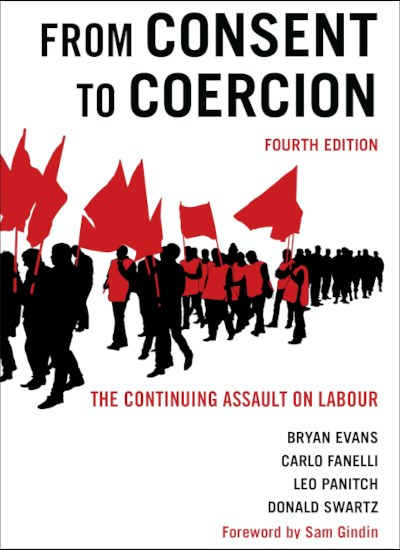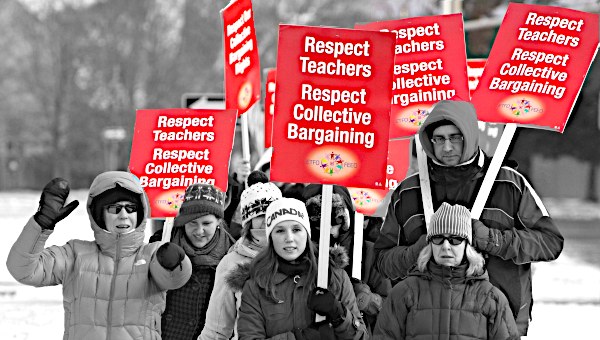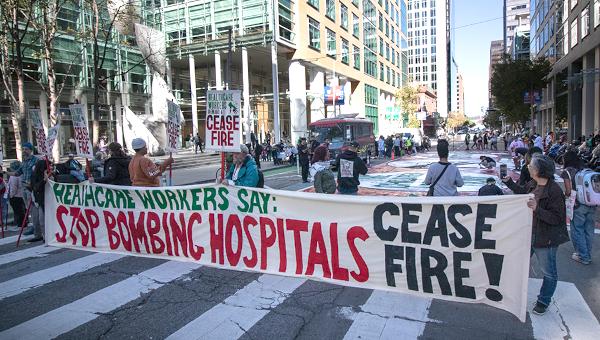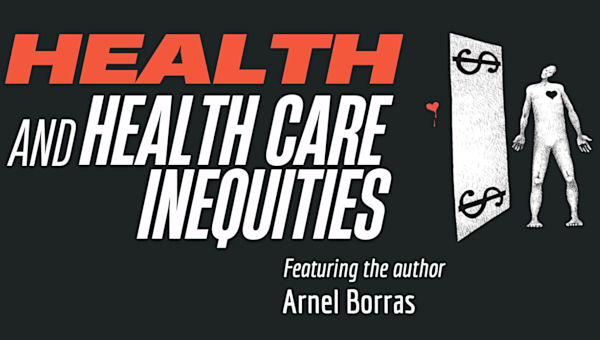Beyond Fatalism: Renewing Working-Class Politics
The following is a forward from the new (fourth) edition of From Consent to Coercion: The Continuing Assault on Labour. Those interested in purchasing a copy can get a 25% discount using the code “Evans25” on the UTP website.
“We need to ask ourselves,” Leo Panitch and Donald Swartz stated in the third edition of From Consent to Coercion, “whether free pertains to those who do business or whether it pertains also to the majority of Canadians who do not do business.” Their book, now a classic, focused on a critical expression of the tension between liberal democratic principles and capitalist realities: the substantive right of workers to strike. Canadian workers were officially granted the basic democratic right to form unions, but the substance of that right – the withdrawal by workers of their labour power – was regularly suspended when workers successfully used it. This was so especially, but not only, in the public sector.

From Consent to Coercion (1985) was updated in 1993 and 2003 and, after a long and significant 20 years, is now updated here once more and in its original spirit by Bryan Evans and Carlo Fanelli. What makes the original book and all its updates such a definitive work is its meticulous research and an analytical framework that merged history, political economy, class conflicts, and the role of the state, all without ignoring the specificity of Canada. Scholarly yet accessible, it is unashamedly partisan in its support for unions without exempting unions from its critical gaze. Through addressing the move from “consent to coercion” in labour relations, it also captures the broader shift that emerged in late 1970s capitalism and was popularly summarized as “neoliberalism.”
Neoliberal Restructuring
Neoliberalism revolved around a restructuring of class forces and social priorities in favour of competitiveness and private profits. At its advent, a good many progressives confidently argued that this new era would quickly collapse from its economic contradictions – and if not, it would be discredited and defeated once its class biases, false promises, and authoritarian tendencies were exposed. Three decades later, with neoliberalism still standing, it became common to hear that the state’s active response to the 2008–09 financial crisis had finally ended neoliberalism, a hasty declaration that was repeated regarding the COVID-19 pandemic.
Yet neoliberalism persists. It has remained the dominant form of capitalism framing all the editions of From Consent to Coercion. It is now the capitalist norm not just in Canada but near universally. What now appears the aberration in capitalist history isn’t neoliberalism but the standard it is compared to – the mythologized postwar “golden age” with its expectations of steady progress for working people. Like the parrot in the Monty Python sketch, that earlier era “is dead, is no more, is bereft of life.”
No other capitalism is today on offer; neoliberalism has become synonymous with capitalism itself. The working-class frustrations that accompanied this social shift did erode the legitimacy of political parties and the state. And capitalism itself no longer carries its past popular esteem. But neoliberalism’s ongoing authority in organizing our lives endures. The latest update of From Consent to Coercion emphasizes what is most significant about neoliberalism’s dominance since the early 1980s: it has been lamented but largely “uncontested.”
Its duration now exceeds four decades (a decade longer than the period from the start of World War I to the end of World War II). Why has this anti-social restructuring of society, with its gross and rising inequalities, permanent insecurity, and ever-narrowing substantive democracy been tolerated for so long, especially by the labour movement? This is the central question today for the labour movement and left in developed capitalist countries.
Adolph Reed has aptly characterized neoliberalism as “capitalism without a working-class opposition.” Reed, as does From Consent to Coercion, sees this as a crisis in liberal democracy with dangerous implications. But though the book is a call to end the undemocratic attack on labour rights so as to retain vital space for furthering a deeper democracy, its authors know full well that this is contingent on a renewal of the trade union movement. To that end, the last chapter of the book provides a number of creative, concrete, and eminently practical proposals for regenerating unions so they have the capacity to challenge this resilient scourge. Yet some very few exceptions aside, those proposals have till now not been seriously discussed in unions, never mind strategically taken up. Again: why?
Working-Class Opposition
Neoliberalism does not bear the full responsibility for the weakness of the labour movement. Rather, it consolidated weaknesses that were already there. Countering neoliberalism’s hegemonic hold on society demands appreciating that the common contrast between neoliberalism and the “golden age” also included continuities in both the nature of the state’s agenda and the limited responses of labour. Elaborating on this necessitates a brief historical interlude. In the first half of the twentieth century, capitalism had presided over two catastrophic world wars, the Great Depression, and the rise of dangerous nationalisms. What came into question was not only the tendency to globalization that Marx predicted, but liberal capitalism itself. In the closing years of World War II, the American state emerged to lead in overcoming this threat. The challenge was to replace the fragmented capitalism of empires, colonies, and protectionism with a world of sovereign states whose economies would be internationally open and linked by private corporations acting through markets.
The flow of natural resources, goods and capital would be determined not by military strength or administrative barriers but by free trade, free capital flows, and competitiveness (with US military power in reserve for dealing with countries wavering in their acceptance of this new order). Each state would have a responsibility to establish the conditions for private capital accumulation within its own territories and guarantee equal treatment for domestic and foreign capital. All this would be constitutionalized via international treaties that superseded national parliaments. Canada became an early model of the integration of sovereign states into a world superintended by the American state. In the immediate aftermath of the war in Europe and Japan, aspects of this vision, such as the removal of trade barriers and especially free capital flows, necessitated compromises to deal with the pressing concerns of economic reconstruction, legitimation, and the restoration of capitalist power. But the direction of development was evident.
The continuity here – from the postwar making of a global capitalism committed to corporate freedoms and property rights to neoliberalism – is clear enough. However, this itself does not do away with the distinctiveness of neoliberalism. A major difference between the two periods remains, and it lies in the two eras’ responses to capitalism’s “labour problem.”
In the postwar years, several factors coalesced to emphasize gaining workers’ acceptance to capitalism’s new road. In some countries the capitalist class had lost legitimacy during the war. As well, the requisites of Cold War ideological conflict gave significant weight to generally demonstrating capitalism’s compatibility with democratic worker rights and material advances. And with the postwar boom in full swing, states in the developed capitalist countries generally had the capacity to meet at least some significant working-class demands (often, as in Europe, with the aid of the United States). Above all, workers came out of the war strong, confident, and determined to make up for their deprivations during the Depression and the war.
Especially critical here was the form taken by the postwar accommodations to the working class. To undermine postwar sentiments calling for a radical redistribution of wealth and economic power, working-class militancy was consciously channelled into individual consumption and cross-class cooperation in supporting growth. Unions were accepted, but only alongside the marginalization of their most radical activists and constraints on solidarity actions across workplaces. (The marginalization of the radical left was especially pivotal in countries like France, Italy, and Greece, where the anti-fascist role of communists during the war led to considerable popular support at the war’s end.)
The “welfare state” provided a measure of security for workers, but in a way that supplemented consumerism rather than looked to replace it with decommodified collective goods. Unemployment insurance, for example, was structured not to remove the discipline of unemployment but to keep laid off workers in the workforce and curb opposition to economic restructuring and imports. Canada’s universal health care system, undoubtedly a great boon to working-class families, never went so far as to include pharmacare, dental care, and eye care, never mind socializing the production of drugs and hospital supplies.
This kind of integration into the capitalist project allowed for a degree of autonomy and militancy that made it possible for workers to make significant gains within the capitalist paradigm. By the end of the 1960s, however, with the postwar boom fading, this became a problem for corporations and the state. And absent a larger vision and political program on the part of labour, the crisis for capitalism became a crisis as well for labour.
With capitalist structures of economic and political power remaining largely untouched, the welfare state was vulnerable to reversals as circumstances changed. And labour, limiting itself to economic militancy and generally fragmented struggles, paid little attention to converting its strength at the time into a broader, robust social force. What bridged the fate of the labour movement across the two periods was that the limited horizons of the labour movement in “the best of times” foreshadowed its defeats in the making and perpetuation of the neoliberal times to come.
The state staggered through a decade of experimenting with various fixes to the crisis of the 1970s and when they all proved inadequate, the stumbling led capitalist elites and the state to the conclusion that there was no longer a middle ground. Options had become polarized. The impasse could only be broken by either greater regulations on corporations or breaking the working class and pressing ahead with more capitalism. Even though they were uncertain how working people would react, the capitalist elites and the state responded radically and decisively to this choice. The labour movement and its political arm, social democracy, did not – they hoped that this aggressive turn was temporary or looked instead for a non-existent middle ground.
Labour’s response emboldened unremitting attacks on workers’ gains. The partial accommodation to workers’ needs gave way to an uncompromising assertion that “there is no alternative.” Fatalism replaced legitimation as the key to reproducing capitalism. And it is fatalism that is now the labour movement’s greatest enemy.
It was not that working people stopped fighting as neoliberalism was imposed. Bouts of resistance did keep resurfacing, but they remained localized, sporadic, and politically narrow. Consumption was maintained and even increased for most families despite austerity and stagnant wages. But in the absence of structures that could give workers confidence in collective struggles, workers were left with survival tactics that came at great cost and unintentionally reproduced neoliberalism’s individualist ethos.
Individuals worked longer hours or picked up extra jobs. Total family hours in the workforce increased even as the alleged liberatory forces of technology marched on. Speedup and weaker health and safety conditions were tolerated, personal debt increased. Young people stayed longer with parents to save for a mortgage. Lower taxes were viewed as a de facto wage increase they had missed out on, even as this implied greater pressure on the social programs desperately needed. While competition among corporations drove some out of business, this created further opportunities for the strong and consolidated capital as a class. For workers, however, competition is death; it undermines the key strength that gives power to the right/freedom to withdraw their labour: their solidarity.
Looking back over the near four decades covered by this book, neoliberalism seems to be less something new than a particular phase of capitalism’s fundamental drive to subordinate literally everything – human labour, social relations, social institutions, nature – to the unrelenting discipline of competitiveness and thereby to capital accumulation. This is a tendency, not an inevitability, but if this anti-social “logic” is to be challenged, then that challenge will have to come from a transformed labour movement.
What we now need to confront with “sober senses” is that there may be no dynamic internal to unions that can lead to such a union renewal. After all this time, the rampant frustrations with neoliberalism have not done it. The inequities and gaps in our health care and social protections have been dramatically exposed by the pandemic, but unions are not coming out of the pandemic more organized and mobilized (some major labour leaders even cozied up closer to conservative politicians). And though the environmental crisis looms with no plan to deal with its scale, here too labour has not taken on the potential of hegemonic leadership.

Union leaderships have either settled into the comfort zone of lowered membership expectations easing pressure on the leaders or reluctantly succumbed to the fatalism that neoliberalism so powerfully radiates. Or they mean well but have so very little in the way of recent experiences to encourage thinking and acting more ambitiously. For their part, workers seem too fragmented, too dependent on their bosses (even when they despise them), too drawn into immediate survival mode, too exhausted by work and the weight of daily life, and too alienated from even their own structures to participate in challenging and changing them. And perhaps above all, there is no organization of committed socialists to act as a catalyst to bring out the best of working people, including their prime organization – their unions.
A World to Win
The necessity of a party not only favouring workers but for achieving socialism was implicit in all the editions of From Consent to Coercion, but this latest edition poses it explicitly in the concluding paragraph of the book. The accumulated defeats in the absence of an institution explicitly committed to class formation have made addressing this imperative. How else to explicitly address class formation, democratize knowledge, develop the individual and collective capacities of working people to imagine a world beyond capitalism, analyze and understand their circumstances, debate without rancour, strategize, lead struggles, and win others over to the creation of a world not yet on the horizon?
Such a party cannot of course just be conjured up by fiat. The long-standing dilemma is that a party needs a popular base, but without a party it is hard to imagine such a base emerging. The only answer to this conundrum is to go beyond waiting for the “objective” circumstances, appreciate that a socialist party is a voluntarist intervention that will always be a “premature” leap into the semi-darkness, yet also respect that some base is still necessary. The immediate goal must therefore be to set in motion processes that engage workers and the infrastructures and relationships that might at some point – indeterminate today – contribute to the creation of an institution capable of freeing us from the debilitating muck of neoliberalism/capitalism to the end of realizing our fullest collective potentials.
From Consent to Coercion has been so indispensable to this project because of what it exposes about both liberal democracy and the limits of the union response yet understands that unions remain an indispensable democratic force in capitalist society. The challenge the authors pose is the critical necessity of union renewal – not the conversion of unions into socialist organizations, which is not their role in representing workers with different politics, but into working-class institutions open to the socialist ideas that are, from a practical perspective, essential to better addressing their members’ needs. That is, providing internal spaces for broader working-class education and deeper participation; seeing local unions as centres of working-class life; extending union battles to the class as a whole; joining the fight against other oppressions that are not “identified” as class struggles but are, at their core, inseparable from them; always raising expectations; and appreciating capitalist limits as contingent barriers to overcome. •





